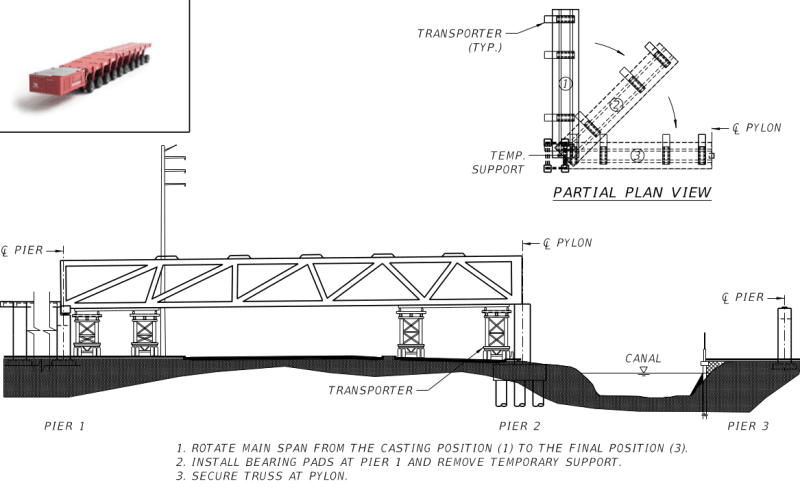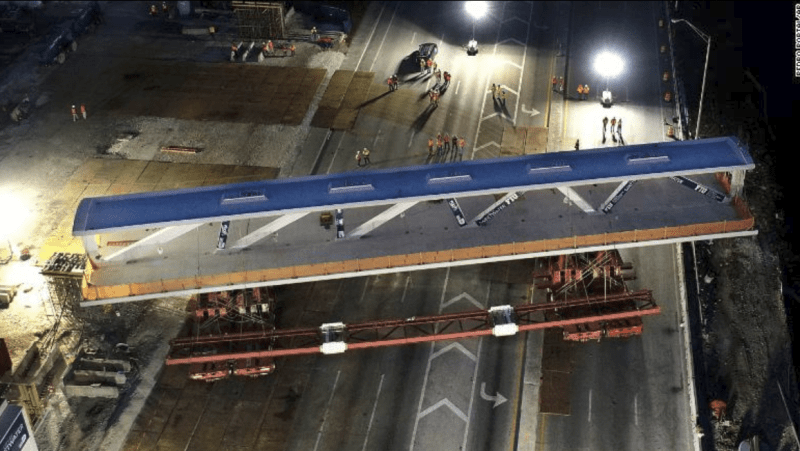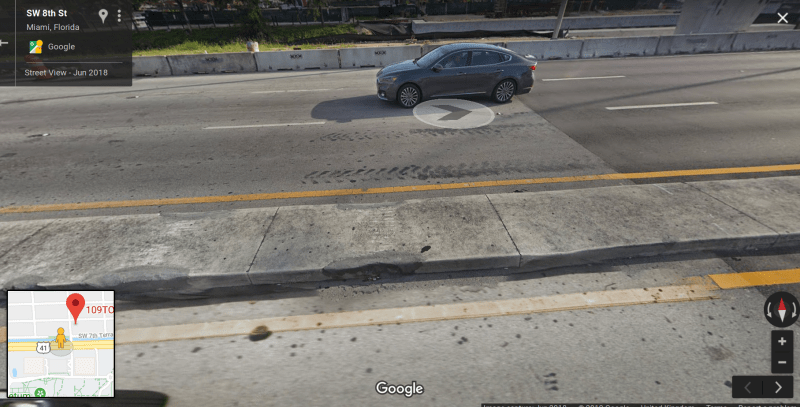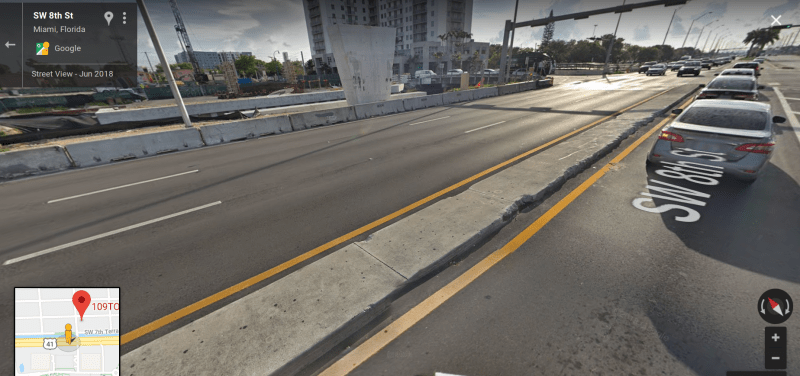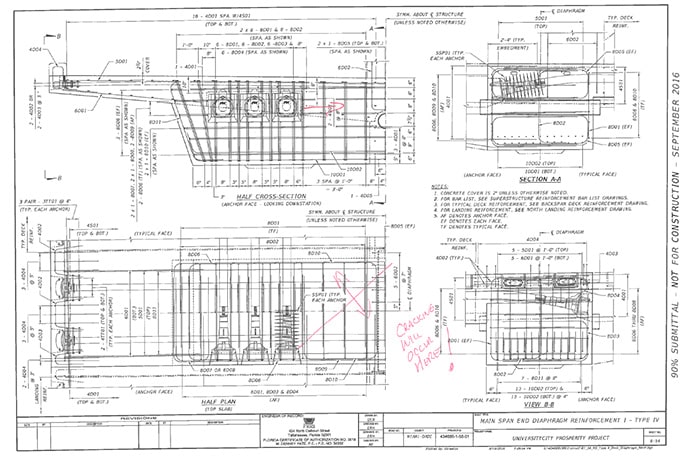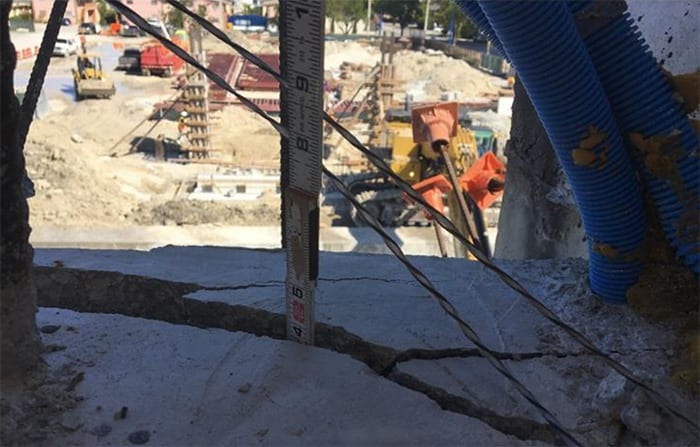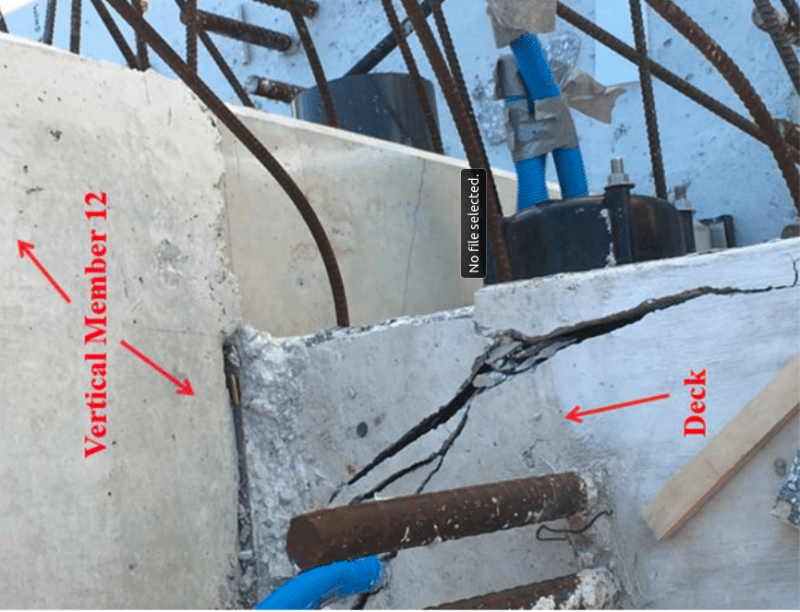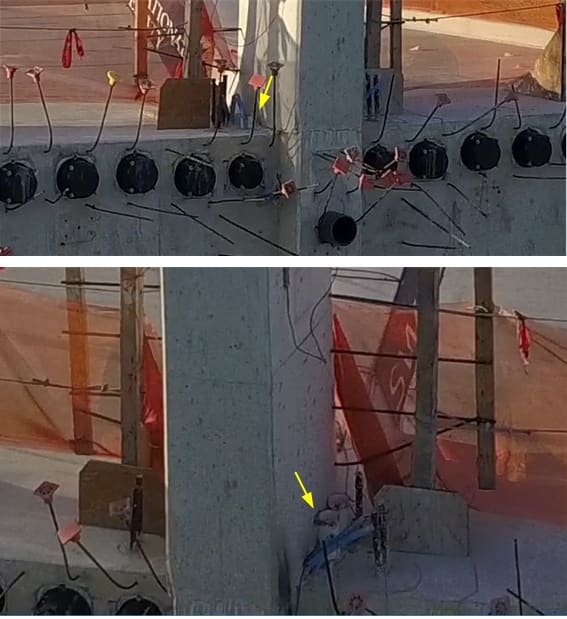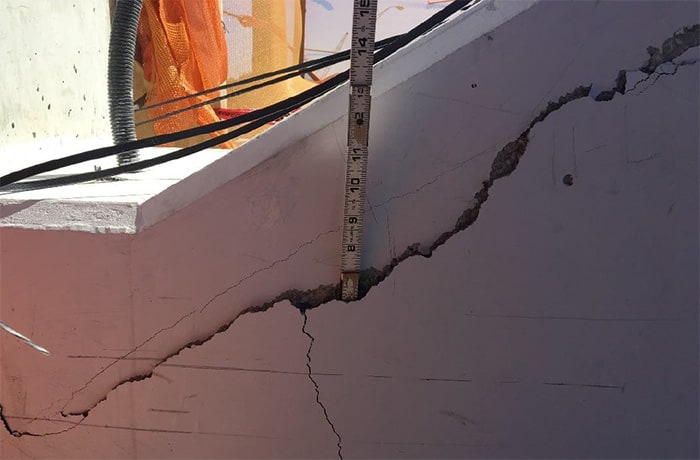Thanks MikeW7 for pointing out the
NBC 6 Massive timeline which was also mentioned by gte447f
The following may have been covered here and there but I just put them together.
(1) As gte447f said the FDOT engineer has asked many questions about Member 11 specifically on the risk of cracking. The NBC6 timeline indicates on 15 Sept 2016 meeting, or 1.5 years before the collapse, FDOT suggested Member 11 needed to have PT rod to withstand the force when the bridge was lifted. He wrote
"Cracking will occur here!" on several drawings. One of them is on the short span a connection similar to Member 11&12 with the deck
The two photos released by NTSB on 9 Aug update have the similar 45 degree cracks spread out as predicted on both sides of Member 11&12. One photo has been rotated to show the 45 degree crack is almost a mirror image of the other side.
(2) NBC6 has a complete set of the FDOT approved drawings for construction. I post a couple below showing weakness which would be apparent to every reinforced concrete designer. This first depicts the Member 11 having very little concrete continuity vertically with the deck due to the presence of a 8" rainwater pipe.
The drawing below depicts on either side of Member 11&12 there were 4 No. of 4" reinforcement tubes and a number of PVC cable ducts. Thus the horizontal continuity of Member 11&12 with the deck will also be compromised. In fact the second NTSB photo shows the crack crosses one of the cable duct.
The interference of the embedded items can be seen from the photo below which has been posted previously here. Note that the bridge at that time was being hoisted and had not yet dropped onto the support so the severity of the cracks was not yet serious. Member 11 was in tension then.
(3) Finally in NBC6 the descriptions of the photos taken by the workman, who fell but survived in the accident, alert me the severity of these cracks which I missed out. The first NTSB photo has been described as
"4-inch crack" because the tape managed to dip 4" into the crack!
This photo also used by NTSB in the 9 Aug 18 Update and was described as
"6-inch crack" because the crack has swallowed a section of the tape of 6" long.
Any professional engineer, who had access to these photos showing the most critical structural connection of the bridge has cracked and separated to a depth of 4" to 6", and did nothing to halt the construction or traffic deserves what is coming to him/her.

